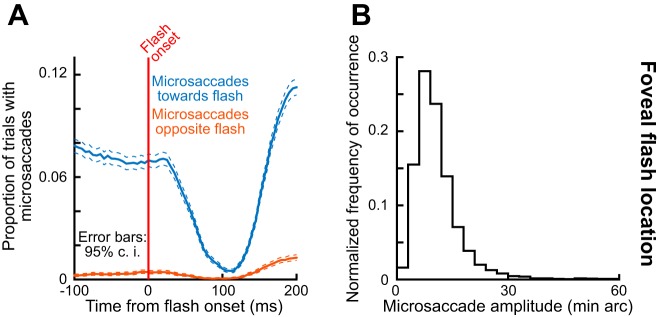Fig. 6.
Microsaccadic inhibition occurs even when flash and movement goal location are almost colocalized and foveal. A: we plotted the proportion of trials containing microsaccades as a function of time from foveal flash onset. Regardless of microsaccade direction relative to the flash location (either bluish or brownish curve), robust microsaccadic inhibition occurred. This was particularly true for toward movements (bluish curve) even though the flash was almost perfectly colocalized with the movement goal (Fig. 5A). Also, note that the frequency of opposite microsaccades is much less than that of toward movements (compare bluish and brownish curves). This is consistent with observations that microsaccades occur to primarily correct instantaneous foveal motor error (Tian et al. 2016). Error bars denote 95% confidence intervals. B: microsaccade amplitude distribution in the present experiment (similar to how it was computed in Fig. 2A), demonstrating the small scale of movement goal and stimulus locations that we tested in this portion of our study.

